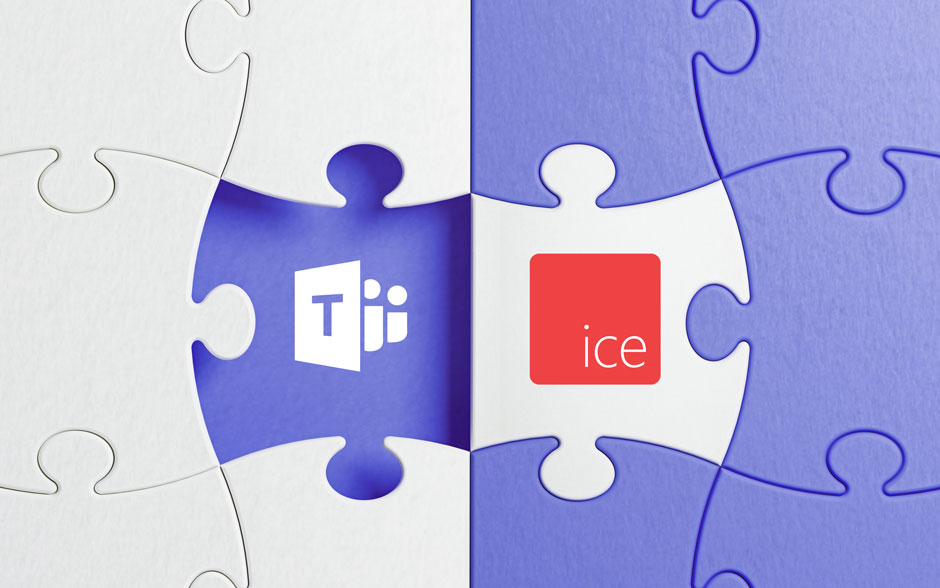Top 2025 Trends in Customer Service
by Anastasia Micic | Published On February 13, 2025 | Last Updated July 8, 2025

Ready to transform customer experience in 2025? Discover the top customer service trends shaping today’s landscape, from agentic AI and hyper-personalization to employee experience.
Customer service has come a long way from the days of hectic call centers packed with agents handling constant, basic inquiries. The contact center has transformed into a dynamic, tech-driven landscape, and customer expectations have evolved on an incredible scale. Keeping up-to-date with the latest customer service trends is the only way business leaders can ensure they stay one step ahead of the competition.
As we move into 2025, some major trends will be familiar, from the continued rise of artificial intelligence to the growing demand for omnichannel support. However, there are some new innovations and patterns organizations need to be aware of, particularly as they embrace ever-more advanced contact center as a service (CCaaS) solutions and technologies.
Here’s your guide to the most significant customer service trends you should be aware of this year, and how they’re going to impact your approach to customer experience.
8 Customer Service Trends to Watch in 2025
In 2024, personalization, artificial intelligence, automation, and cloud adoption were the major driving forces behind evolving customer interactions. So, what’s on the cards for 2025? Based on our extensive insights into the customer experience landscape, here are the customer service trends to watch.
1. Increased Adoption of AI and Automation
In 2025, human agents aren’t going anywhere, but neither is automation and AI in contact centers. In fact, the workflow automation and artificial intelligence solutions companies have access to today are more advanced than ever before. Not only do we have conversational and generative AI systems capable of creating personalized experiences at scale, but “copilots” are everywhere.
Around 79% of contact center agents today believe that having an AI assistant at work super-charges their abilities, helping them to solve problems and address issues faster and more effectively. AI chatbots, copilots, and virtual assistants will continue to revolutionize automated customer service strategies, helping to ensure human agents can focus 100% of their time on nurturing relationships.
These technologies will consistently make organizations more efficient, reduce response times, and minimize operational costs, while ensuring consumers can access instant solutions to problems. The number of tasks and challenges that AI solutions will be able to automate is increasing too, thanks to the rise of “agentic AI”. Agentic AI solutions can make autonomous decisions aligned with business goals, acting as complementary parts of an evolving customer service team.
Agentic AI can proactively guide customers through decision-making processes, troubleshooting tasks, and more, all without requiring human intervention. As we move into 2025 and beyond, customer service trends will be shaped by an evolving relationship between humans and modern AI technology.
2. Omnichannel Customer Experiences
Omnichannel interactions has remained one of the top customer service trends for several years now, but in 2025, omnichannel customer experience won’t be a luxury – it will be an expectation. According to McKinsey, in the next five years, companies will need to achieve complete consistency across all service channels, delivering a truly seamless experience to each customer.
The days of separate channels operating in silos will be over, and organizations will need to ensure they maintain context and minimize interruptions for customers as they switch between channels. Businesses will need to prioritize aligning multichannel support systems, to ensure that agents can access full interaction histories and follow customers as they move through each stage of their service journey.
The shift to omnichannel isn’t just about meeting expectations; it’s about creating memorable, engaging experiences. With advanced AI-driven tools, companies can manage customer data holistically, pulling insights from every interaction to predict needs and deliver tailored solutions.
For example, an AI-enabled CCaaS platform like ComputerTalk’s ice Contact Center unifies customer interactions in real time, allowing agents to focus on building relationships rather than piecing together fragmented data. Notably, companies will also need to think carefully about the channels they include in their omnichannel strategy. In 2025, it’s not just voice, email, and live chat organizations need to consider, but SMS, social media, and even extended reality experiences.
3. Personalization through Data Insights
Similar to omnichannel support, personalization is one of the more enduring customer service trends we’ve seen in recent years. For years, studies have shown that customers don’t just want personalized customer service – they expect it. However, personalization in 2025 won’t just be about greeting customers by name. Organizations will need to take proactive control of customer relationships.
This will be the year of proactive support, where companies actively learn about their customers, and anticipate their needs, preferences, and pain points before they reach out. Powered by data-driven contact centers, businesses will use advanced analytics and AI to create hyper-personalized experiences that foster satisfaction and loyalty – nurturing ongoing relationships.
Fortunately, cutting-edge technology is powering the rise of more proactive, personalized experiences. Today’s CCaaS solutions can integrate with CRM systems, making it easy for agents to personalize every discussion with a customer in real time. AI-driven tools can automatically assess historical and real-time data, to deliver personalized product recommendations and suggestions to each customer.
Innovations in artificial intelligence will even help to make self-service more personalized, ensuring virtual agents can draw on customer data to enhance discussions. According to one study, 42% of companies investing in AI cite increasing hyper-personalization as a significant use case.
AI will also help organizations to build stronger customer profiles and journey maps, transforming future personalization strategies.
4. Focus on Employee Experience
In 2025, companies are realizing that happy employees are the backbone of exceptional customer experiences. Investing in agent experience is becoming essential to improving employee engagement in customer service, reducing turnover, and achieving consistent results.
As customers manage more processes independently with the help of AI tools, and contact center interactions become more complex, reducing call center burnout will be a major focus for organizations. AI-powered tools, such as real-time conversation analysis solutions and copilots can help reduce the strain on staff members, helping them to accomplish more in less time.
For instance, agent assist chatbots can use AI to suggest responses, highlight relevant information, and provide next-step guidance during live interactions, thus reducing stress and boosting productivity. Business leaders will also need to invest in more comprehensive tools for workforce management and optimization, using technology to forecast staffing needs and allocate resources more efficiently.
Innovative WFM and WFO solutions integrated with contact center platforms will also help to facilitate constant feedback loops, ensure businesses can recognize employees rapidly, and even offer access to tools to enhance motivation, like gamified leaderboards.
Ultimately, happier agents mean happier customers. By combining human expertise with AI efficiency and intelligent workforce optimization strategies, organizations will see measurable gains in both customer and business success.
5. Greater Reliance on Cloud-Based Contact Centers
For several years now, companies have been focusing on moving more technologies and processes into the cloud, prioritizing agility, flexibility, and cost savings. Cloud-based contact centers and unified communication systems are becoming the new norm for those in need of scalability.
Cloud migration for call centers is critical as companies continue to embrace the benefits of remote and flexible work. With innovative CCaaS solutions, agents can work from anywhere with an internet connection, ensuring businesses can access diverse global talent and deliver better work-life balance to employees. But the transition to the cloud isn’t just about building diverse, resilient teams.
Cloud migration empowers companies to access advanced features and solutions that were difficult to achieve with on-premises systems. Companies can align UCaaS and CCaaS systems (connecting contact centers to tools like Microsoft Teams) for deeper business insights. They can rapidly take advantage of AI-driven analytical tools to monitor performance, customer sentiment, and critical metrics across all channels, at an incredible scale.
Although the migration to the cloud can still feel like a complex process, innovators like ComputerTalk are prioritizing finding ways to simplify the transition for teams. With intuitive integration and implementation options, personalized training, and end-to-end customer service, ComputerTalk makes moving to the cloud convenient and painless.
6. Focus on Call Center Security
In the world of customer service, security, privacy, and compliance threats evolve just as quickly as cutting-edge technology. As we move into 2025, robust call center security strategies will continue to be a top priority for all organizations, as breaches and privacy concerns continue to evolve.
Although consumers are increasingly willing to share data with companies to benefit from more personalized service experiences, 68% of customers worldwide say they’re concerned about data privacy issues. Companies will need to take extra measures to ensure that data protection in contact centers is robust, transparent, and effective.
Trust is the cornerstone of strong customer relationships, and safeguarding sensitive information is critical to maintaining it. The growing adoption of AI in contact centers is also influencing the approach organizations take to delivering secure customer service.
While AI enables hyper-personalization and proactive customer service, it also raises questions about data governance. Companies must address concerns such as ensuring AI systems don’t access or misuse unauthorized data, preventing unintentional data leaks, and protecting models from malicious interference. Combining best practice strategies like end-to-end encryption and multi-factor authentication with robust AI governance strategies will be essential in the years ahead.
Fortunately, leading CCaaS vendors already offer access to a wide range of security-boosting solutions, from encrypted PCI payment processing solutions, to real-time monitoring tools that can help businesses keep a close watch on emerging threats and issues.
7. Integration of Voice of the Customer (VoC) Programs
As companies strive to find ways to learn more about their customers, and deliver more personalized support, the integration of voice of the customer (VoC) programs has become more crucial. As customer expectations continue to evolve, VoC in contact centers will play a pivotal role in helping businesses adapt to changing trends and preferences.
Traditional strategies for collecting insights and customer feedback analysis – such as surveys and focus groups - remain important. However, they’re also being augmented by the introduction of AI-enabled technologies that can provide deeper insights into customer sentiment.
Generative AI tools are also revolutionizing how companies analyze both structured and unstructured data. By sifting through customer reviews, chat logs, and even social media interactions, GenAI uncovers nuanced insights about customer preferences, pain points, and emerging trends, often leading to faster innovation for modern teams.
Taking a proactive approach to voice of the customer analysis will help companies to stay one step ahead of customer service trends moving forward and make more data-driven decisions to strengthen loyalty.
8. Enhanced Self-Service Options
Finally, self-service customer support continues to be one of the most significant customer service trends influencing contact centers in 2025. Companies are increasingly serving younger generations of digitally native customers who prefer to address issues without the assistance of a human agent.
For instance, around 38% of Millennial and Gen Z customers say if they can’t address a problem with self-service resources, they’ll give up on it entirely. To ensure customers can handle more problems and tasks independently, businesses will need to invest in more advanced self-service resources.
Businesses will begin using generative AI to create comprehensive step-by-step guides and immersive content for customer knowledge bases.
Advanced AI self-service tools will also become more popular. Conversational and generative AI bots capable of interacting with customers on a range of channels will be essential. We’ll see these bots becoming increasingly multimodal in the years ahead, responding to and generating text-based, voice, and visual content thanks to evolving language models.
While these upgraded self-service options will never eliminate the need for human agents in the contact center entirely, they will help to minimize the number of service requests that employees need to handle each day, improving operational efficiency, and reducing the risk of agent burnout.
The Future of Customer Service with CCaaS
In 2025, the customer service landscape is defined by innovation, adaptability, and a relentless focus on meeting evolving consumer expectations. From embracing AI-driven automation and hyper-personalization to omnichannel experiences, self-service customer support, and robust security measures, these customer service trends are reshaping how businesses interact with their customers.
Staying ahead of these trends as they continue to evolve will require companies to invest in more agile, scalable, and flexible solutions for the contact center. Innovative contact center as a service (CCaaS) platforms, such as ComputerTalk’s ice Contact Center will play a critical role in helping organizations embrace the latest trends affecting CX interactions.
By unifying communication channels, streamlining workflows, and leveraging data-driven insights, CCaaS solutions provide the tools businesses need to innovate and thrive in a competitive market. Are you ready to adapt to the latest customer service trends in 2025? Contact ComputerTalk today to request a demo of our future-ready CCaaS platform.
More from our blog
 As the developer of the Teams native ice Contact Center, ComputerTalk is currently one of the first companies to go through Microsoft’s Connected Contact Center for Microsoft Teams Certification Program. Among other benefits, this certification will mean that ice Contact...
As the developer of the Teams native ice Contact Center, ComputerTalk is currently one of the first companies to go through Microsoft’s Connected Contact Center for Microsoft Teams Certification Program. Among other benefits, this certification will mean that ice Contact...
 IVR (Interactive Voice Response) systems are becoming smarter and more intuitive all the time. They’re not just there to route a customer to the right agent anymore.
IVR (Interactive Voice Response) systems are becoming smarter and more intuitive all the time. They’re not just there to route a customer to the right agent anymore.
 Customers reach out to organizations for a variety of reasons: to update their addresses, to follow up on orders, to change their login credentials, and so on.
Customers reach out to organizations for a variety of reasons: to update their addresses, to follow up on orders, to change their login credentials, and so on.

